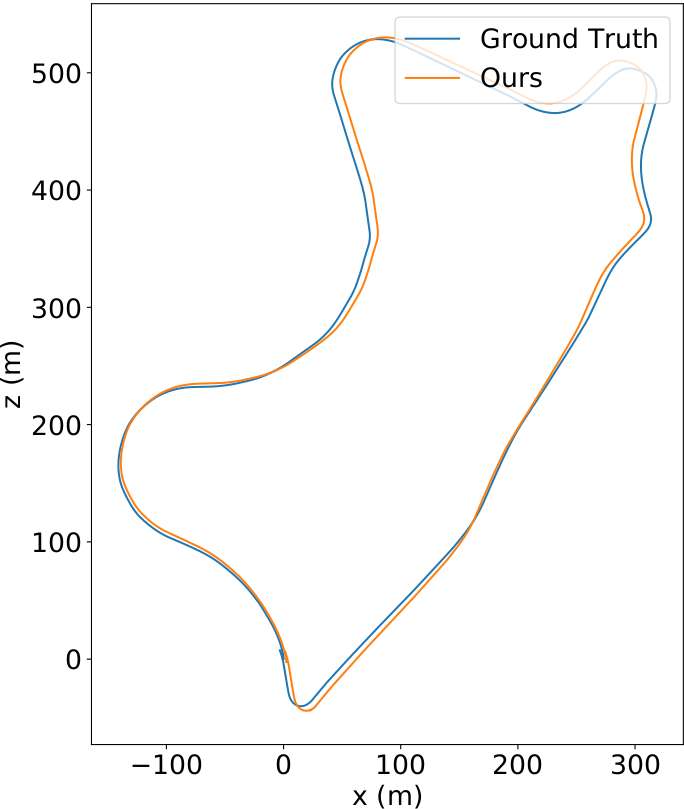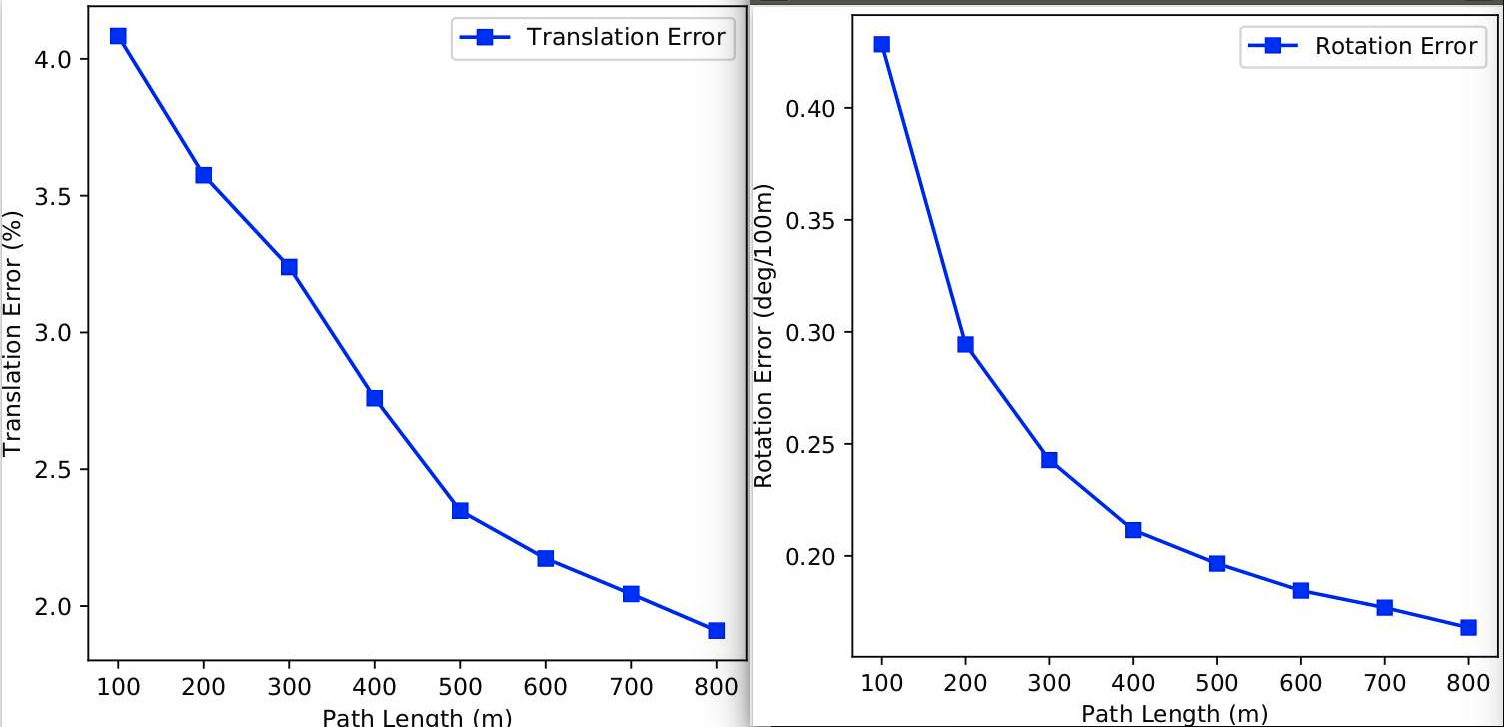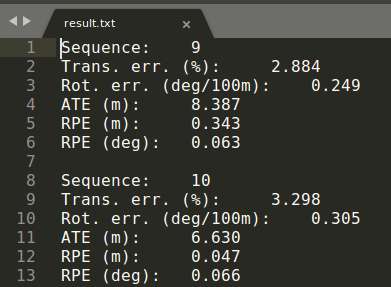KITTI Odometry benchmark contains 22 stereo sequences, in which 11 sequences are provided with ground truth.
The evaluation tool is used for evaluating KITTI odometry result. We include several common metrics in evaluating visual odometry, including
- sub-sequence translation drift percentage
- sub-sequence rotation error
- absolute trajectory error
- relative pose error (translation)
- relative pose error (rotation)
We recommend using Anaconda for installing the prerequisites.
conda env create -f requirement.yml -p kitti_eval # install prerequisites
conda activate kitti_eval # activate the environment [kitti_eval]
Before evaluation, estimated poses should be saved in a .txt file.
Currently, there are two formats are supported.
Suppose the pose for 100-th image is
T00 T01 T02 T03
T10 T11 T12 T13
T20 T21 T22 T23
0 0 0 1
You should save the pose as
# First format: skipping frames are allowed
99 T00 T01 T02 T03 T10 T11 T12 T13 T20 T21 T22 T23
# Second format: all poses should be included in the file
T00 T01 T02 T03 T10 T11 T12 T13 T20 T21 T22 T23
To use the tool, there are some possible options. The basic usage is
# RESULT_PATH contains the camera pose text file,
# which should be named as 00.txt, 01.txt, ...
# Example
python eval_odom.py --result result/example_1/
The full usage is
python eval_odom.py --result RESULT_PATH --align ALIGNMENT_OPTION --seqs X X X
# Examples
python eval_odom.py --result result/example_0 --align 7dof
python eval_odom.py --result result/example_1 --align 6dof --seqs 9
X is the sequence number. If --seqs is not given, all available sequences in the folder will be evaluated.
The detailed results will be saved in RESULT_PATH
Following prior works, certain degrees of alignment can be done in this evaluation script. Pass one of the following argument --align XXX to the script, where XXX can be,
- scale
- scale_7dof
- 6dof
- 7dof
Find a scaling factor that best align the predictions to the ground truth (GT) poses
Find a 6+1 DoF transformation, including translation, rotation, and scaling, that best align the predictions to the GT poses. After that, only the scaling factor is used to align the predictions to the GT for evaluation.
Find a 6 DoF transformation, including translation and rotation that best align the predictions to GT poses.
Find a 6+1 DoF transformation, including translation, rotation, and scaling, that best align the predictions to the GT poses.
Here shows some evaluation result examples

Trajectory comparison
Sub-sequence error
Result summary
The code is released under the permissive MIT license.
If you use this toolbox, a footnote with the link to this toolbox is appreciated.
You can also cite the DF-VO which we release the toolbox in the first place.
@article{zhan2019dfvo,
title={Visual Odometry Revisited: What Should Be Learnt?},
author={Zhan, Huangying and Weerasekera, Chamara Saroj and Bian, Jiawang and Reid, Ian},
journal={arXiv preprint arXiv:1909.09803},
year={2019}
}


